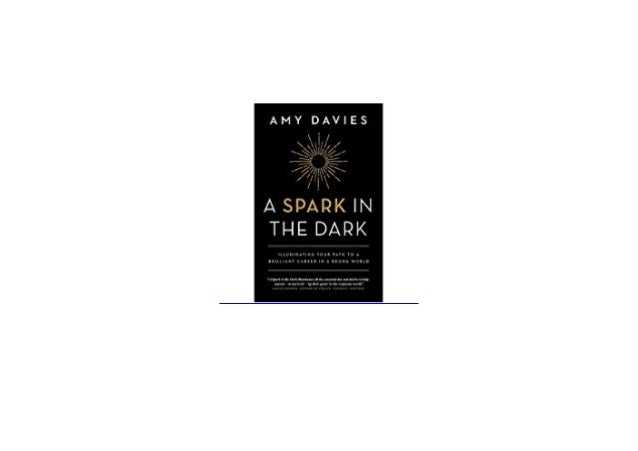

- #Be the spark in the dark how to
- #Be the spark in the dark software
- #Be the spark in the dark professional
The second theme was that the creators needed to know how to structure an episode and make the best use of each segment or element with content that grabs listeners. The technical team addressed this in their work to automatically level and produce the recordings into a podcast. One was that the audio quality needed to sound good without burdening the podcast creator with the need to buy expensive equipment. Distill: Given the two things above, what does the design need to do to provide value for the user, smooth away the hurdles, and qualify as a “professional” podcast?.Quick, easy, for non-technical users) What hurdles stand in their way? (e.g. Identify: What values do everyday business owners, entrepreneurs, and potential podcasters need in a podcasting platform? (e.g.They must include these segments, typically recorded in this order)
#Be the spark in the dark professional
Define: What makes a podcast “professional” according to the professional producers? (Ex.Through the research, I found a critical formula for choosing my direction:

In addition, I ran a survey asking people who wanted to start a podcast to identify the common mental hurdles. So I conducted interviews with podcasters of all skill levels and professional podcast production engineers. Still, I needed to fully explain to myself and everyone else what made it so challenging. I came up short in my search for simple answers. I knew that creating a professional podcast in an afternoon was a monstrous task. More on this later… The formula for research So if you find yourself spending the bulk of your time dragging button components around a Figma canvas, recognize that this is only on the surface of what user experience designers can do.
#Be the spark in the dark software
However, what makes software great isn’t about how you color the buttons or where you put them on the screen. Initially, I was asked to take an existing application and make it look nicer. So I did what I could to help clean up the prototype, which involved minor restructuring, user-friendly language, and stylistic changes. However, startups are a tricky business, and we needed to begin working with early adopters quickly. I often remind my technical development colleagues that “if you build it, they will come” does not apply to software applications. However, that doesn’t guarantee usability or intuitiveness and they knew they needed user experience design.Įarly beta version prior to UX design efforts They did what plenty of developers do: build the functionality needed to complete a task. The development team was focused on perfecting the automation process. The recordings would be automatically leveled and stitched together. For example, a podcast creator could record separate sections such as an opener, intro, and teaser. They created a basic prototype consisting of the core functionality. My startup teammates were working on this problem long before I arrived on the scene. My journey ended at Auntie Anne’s because, as I always say, when in Rome, eat a mall pretzel. Then I picked up and paid for a blank sketchbook, knowing that it would play a key role in my design process for this project. I gave a glance or two to the plush Totoros as I thought of my daughter, who loves that film. I shelved the book and took the escalator back downstairs. There was no framework for the design I was employed to create - only a set of values I suspected needed to be delivered. “A professional podcast in an afternoon” was what they were after, and while the concept sounded simple, I knew I had just unearthed a massive design problem. Their premise was strong - They knew there was a need because the complex weaving of audio and publishing tools required in order to make a solid, subscribable podcast wasn’t accessible to most people. My task was to help an early-stage startup create a solid user experience for quick and easy professional podcast creation. It wasn’t here - there was no succinct guidance for efficiently making a professional podcast. So I flipped through the book, and as I read the chapter titles, call-outs, and summaries, I was surprised. I needed something meatier, with more context, to give me a real nugget to hold. I had already read what felt like a million blogs and Medium articles about best practices with bullet lists of must-haves, must-dos to make a successful podcast. Tracing my finger down a row of waxy book spines, I located the one book that brought me here: Podcasting for Dummies. I rode the escalator up to the second floor of Barnes and Noble and navigated my way through the shelves, overlooking the bargain tables, until I found the lonely corner I needed. A few years ago I was on a journey that took me to the mall.


 0 kommentar(er)
0 kommentar(er)
